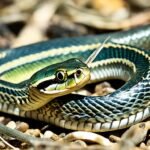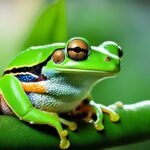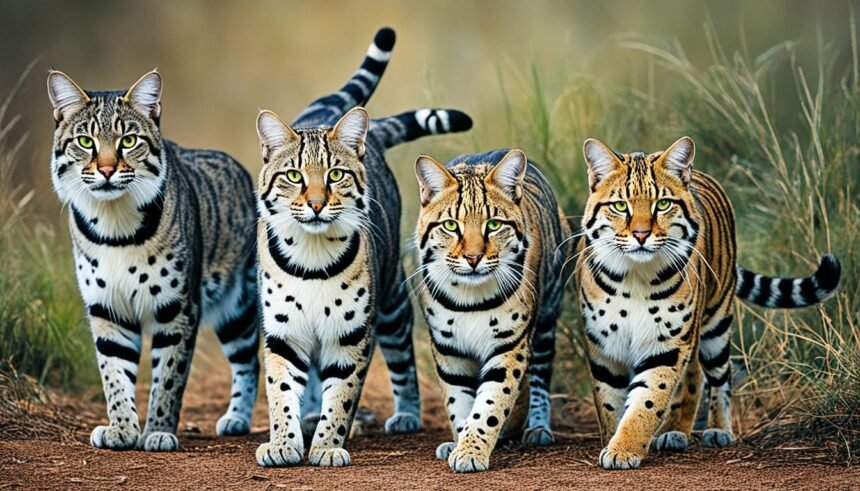Garter snakes are often seen in the US, sparking the question of their danger. There are over 35 garter snake poisonous species, each with its own colors and marks. Some, like the common garter snake (Thamnophis sirtalis), have a mild venom in their saliva. This can cause minor irritation and swelling if they bite you.
Garter snakes are small, usually 15 to 35 inches long. But sometimes, one can be as long as 5 feet. They are most active in late spring and summer. You can spot them in meadows, gardens, and forests near water. In Acadia National Park, they’re among five snake types, all of which are not harmful if they bite you. But, if you suspect a severe allergic reaction to a bite, get help fast.
Understanding the Difference Between Poisonous and Venomous
It’s important to know the difference between poisonous and venomous animals, especially in the snake world. These two terms mean very different things. All snakes, like the garter snake, have special traits that show if they are poisonous or venomous.
What Makes an Animal Poisonous?
Poisonous animals have toxins inside them. If you touch or eat them, you could get sick. Garter snakes, for example, can be poisonous. They eat other poisonous animals, like frogs. So, eating these snakes can make you ill.
Some spiders are also poisonous. If they touch you, it might make your skin red or itchy. Though these effects aren’t usually serious, it’s smart to be careful around them.
Defining Venomous Animals
Venomous animals are different. They use fangs or stingers to inject toxins. For snakes, their bite can be venomous, delivering complex substances into the victim. The saliva of some garter snakes, such as the common garter snake, carries mild venom.
Most mildly venomous snakes are safe for people. Yet, severe reactions can still happen. Luckily, such severe reactions are rare. But, against highly venomous snakes, like cobras, get medical help fast if bitten.
| Poisonous Animals | Venomous Animals |
|---|---|
| Garter snakes (some species) | Cobras |
| Poison dart frogs | Rattlesnakes |
| Cane toads | Black widow spiders |
| Pufferfish | Scorpions |
Learning about poisonous and venomous creatures helps us respect nature. It’s a reminder to keep safe distances from wild animals. Knowing about the dangers helps us live near these fascinating beings peacefully. They help us understand the world’s biodiversity better.
Garter Snake Characteristics and Habitat
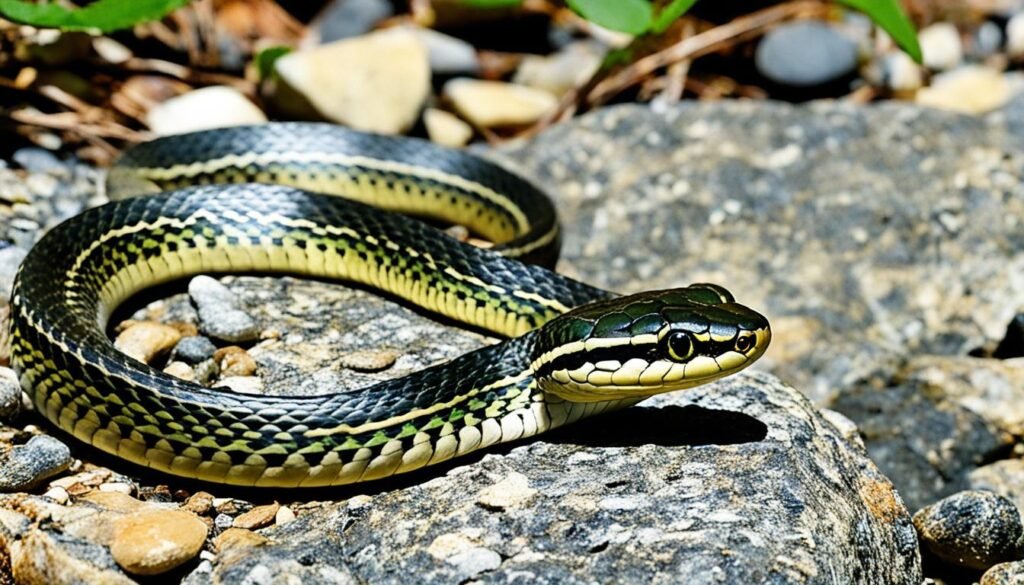
Garter snakes are common in North America. They belong to the Thamnophis genus in the Colubridae family. These snakes are fast and have a lovely look. They can live in many different places. There are about 35 different types of garter snakes.
Physical Appearance and Size
Garter snakes usually grow between 18 to 51 inches long. But, some can be as long as 5 feet. They’re often gray, brown, or black with three stripes. These stripes can be yellow or green. Garter snakes also have tongues that are red at the base and black at the tip.
Geographical Distribution
Garter snakes live in North and Central America. They are in all the lower 48 states and most Canadian provinces. But, they aren’t in Newfoundland and Labrador. The common garter snake is the most widespread. It goes from Alaska to Florida, but not in the Southwest.
| Region | Garter Snake Species |
|---|---|
| Eastern North America | Eastern Garter Snake (Thamnophis sirtalis sirtalis) |
| Western North America | Western Terrestrial Garter Snake (Thamnophis elegans) |
| San Francisco Bay Area | San Francisco Garter Snake (Thamnophis sirtalis tetrataenia) |
| Central America | Middle American Garter Snake (Thamnophis fulvus) |
Preferred Habitats
Garter snakes can live in many places, from forests to near water. They enjoy the sun and can be found by water. In the winter, they might hibernate together. They communicate with scents and have interesting ways of mating.
Garter snakes do well in different places in North America. But, some, like the San Francisco garter snake, are at risk. This is because of where they live and being taken too much. Others are in trouble because of animals that don’t belong, like crayfish. Protecting these snakes is important for the environment.
Garter Snake Diet and Hunting Behavior
Garter snakes eat meat. They prefer small animals like amphibians, fish, and even small birds. They are not deadly, but some, like the common garter snake, have mild poison to help catch their food. You can find these snakes all over North America. Each type has its own special place to live.
Common Prey Items
Garter snakes mostly eat things like frogs and toads. They also like salamanders, earthworms, and fish. Sometimes, they hunt crickets, lizards, and even tiny birds or rodents. What they eat depends on where they live and what is available.
| Prey Type | Examples |
|---|---|
| Amphibians | Frogs, toads, salamanders |
| Invertebrates | Earthworms, slugs, leeches, crickets |
| Fish | Small fish species |
| Reptiles | Lizards |
| Birds | Nestlings |
| Mammals | Small rodents |
Hunting Techniques
Garter snakes are skilled hunters. They rely on their senses of smell and sight. They flick their tongues to taste the air and find food. This is thanks to a special organ in their mouth that tells them about their meal’s location.
After finding its prey, a garter snake moves fast to catch it. They have sharp teeth to help keep their meal from getting away. Some garter snakes have a weak venom that they use to disable their prey. This makes their meal easier to eat.
In winter, garter snakes hide in cozy places. They sleep deeply, almost like hibernating. When spring comes, they wake up to look for food and find a mate.
Are Garter Snakes Poisonous?
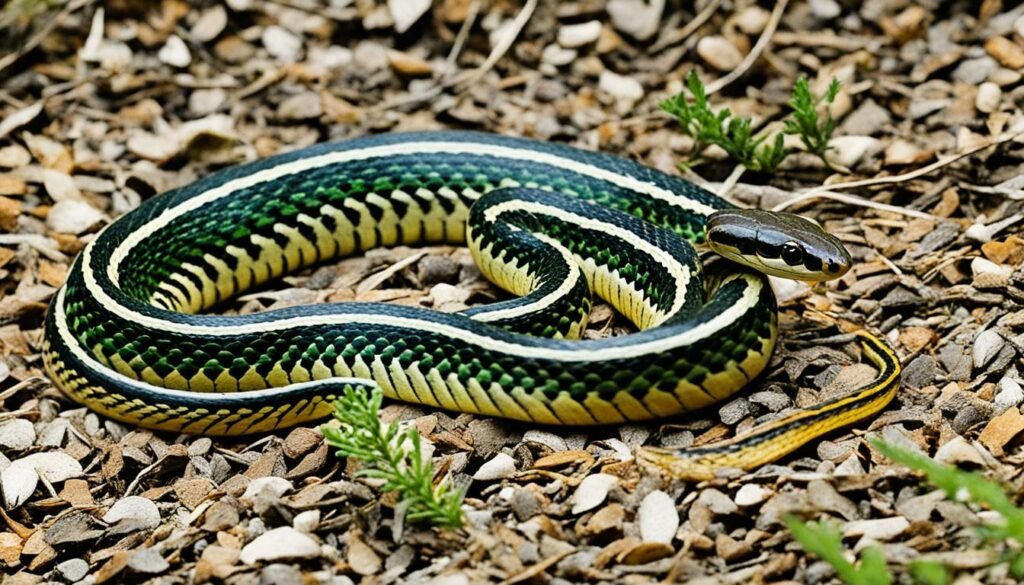
Garter snakes are well-known in the US and Canada, with their three stripes. Even though they are not poisonous to people, they have a mild toxicity in their bites.
The Mild Toxicity of Garter Snakes
Some garter snakes, like the common and wandering garter snakes, have a mild venom. This venom is not strong enough to really harm humans. It only causes slight problems if they bite us.
They use the mild venom to catch their food, like earthworms and minnows. The venom helps them hold their prey still. But, this venom doesn’t really affect large animals or people.
Effects of Garter Snake Bites on Humans
If a human is bitten, it might cause a bit of swelling or redness. These effects usually go away on their own without needing a doctor.
But sometimes, a very few people might be allergic to the snake’s bite. This could cause a serious reaction, like trouble breathing. In these cases, it’s very important to get help right away.
| Type of Snake | Toxicity Level | Symptoms of Bite |
|---|---|---|
| Garter Snake | Mildly toxic | Localized irritation, swelling, and redness |
| Rattlesnake | Highly venomous | Severe pain, swelling, nausea, vomiting, labored breathing |
| Copperhead | Venomous | Pain, swelling, bruising, nausea, vomiting |
| Cottonmouth | Venomous | Pain, swelling, bleeding, nausea, vomiting, shock |
It’s wise not to touch or tease garter snakes. If you see one, keep your distance. This way, you can enjoy their presence and stay safe from their mild venom.
Garter Snake Venom and Its Effects
Garter snakes, a backyard staple in the U.S., have mild venom. This venom is not dangerous to most humans. Understanding their venom helps us stay safe, especially in late spring. This is when they come out from hibernation.
Composition of Garter Snake Venom
Garter snakes use a neurotoxic venom for hunting. This venom comes from glands near their eyes. It affects the prey’s nervous system. It is made up of proteins and compounds.
Some garter snake groups resist tetrodotoxin found in their food. This makes them better hunters. They use the toxin in their own venom safely.
Symptoms of Garter Snake Bites
Although garter snakes are venomous, their bites are usually harmless. They cause mild symptoms like swelling and itching. Most people need no special treatment for these bites.
- Minor swelling and redness around the bite area
- Mild itching or irritation at the bite site
- Slight discomfort or pain near the affected area
But if you’re very sensitive, you might experience worse symptoms. These could include severe swelling and difficulty breathing. Seek medical help if severe symptoms occur.
- Extensive swelling and inflammation around the bite
- Nausea, vomiting, or dizziness
- Difficulty breathing or swallowing
- Rapid heartbeat or chest pain
Most garter snake bites can be treated at home without much trouble. Clean the bite, apply something cold, and look for signs of infection. If problems get serious, see a doctor.
| Venom Type | Primary Effects | Severity in Humans |
|---|---|---|
| Neurotoxic | Targets the nervous system, causing paralysis or respiratory failure | Mild to moderate, rarely life-threatening |
| Hemotoxic | Affects the blood and circulatory system, leading to tissue damage and internal bleeding | Not present in garter snake venom |
| Cytotoxic | Causes localized cell death and tissue necrosis at the bite site | Minimal, limited to minor swelling and irritation |
Garter snake bites might scare you, but they are important. By eating pests, they help their ecosystem. With a little care, we can safely enjoy these amazing creatures.
Garter Snake Behavior and Interaction with Humans

Garter snakes, like the common and eastern types, are most active when it’s warm, especially in the afternoon. They come out to search for food and enjoy the sun. These snakes can be found all over North America, living in places like forests, fields, and even your backyard.
Even though garter snakes can produce venom, it’s not strong enough to harm humans. They usually avoid us and might only bite if they are scared. If they do bite, they first let out a smelly fluid and then try to defend themselves.
Defensive Behaviors
When garter snakes sense danger, they have a few ways to protect themselves:
- Releasing a foul-smelling musk from their anal glands to deter predators
- Flattening their bodies to appear larger and more intimidating
- Vibrating their tails rapidly to mimic the sound of a rattlesnake
- Striking and biting if they feel cornered or threatened
Likelihood of Biting Humans
Even though they have mild venom, garter snakes will avoid biting people as much as possible. They would rather run away than face a human. If you are bitten, you might see some swelling and itchiness, but nothing serious.
| Species | Likelihood of Biting Humans | Venom Toxicity |
|---|---|---|
| Common Garter Snake | Low | Mild |
| Eastern Garter Snake | Low | Mild |
| Ribbon Snake | Low | Mild |
If a garter snake does bite you, it might cause a little swelling, redness, and itchiness. But, serious allergic reactions are rare. If you start to feel dizzy or have trouble breathing, you should get medical help right away.
To avoid a snake bite, be careful when you see a garter snake. Stay far away and don’t try to touch it. This way, the snake won’t feel threatened and is less likely to bite you. Just remember to give them space and they will leave you alone.
Treating Garter Snake Bites
Garter snakes are usually safe for people, but they might bite when scared. Some, like the common garter snake, have weak toxin in their saliva. This toxin is not harmful to us. Still, it’s important to treat any snake bite correctly to avoid sickness.
Proper Wound Care
If a garter snake bites you, start by washing the wound with soapy water. This gets rid of any harmful bacteria. Next, put on some antibiotic cream and cover it with a bandage. Watch for any signs of infection, like redness or swelling.
Even though garter snakes aren’t as risky as spiders or poison snakes, care for the wound is still key.
When to Seek Medical Attention
Rarely, some people might be allergic to a garter snake bite. Signs like hives, face swelling, or trouble breathing can be serious. If you feel any of these, get help fast.
If you’re not sure if the snake was venomous, like a copperhead, go to the doctor just to be safe. Live-threatening venomous snake bites need immediate medical care with antivenom.
| Snake Species | Venomous | Bite Symptoms |
|---|---|---|
| Garter Snake | Mildly venomous, generally harmless to humans | Pain, swelling, possible infection |
| Copperhead | Venomous | Severe pain, swelling, nausea, labored breathing |
| Rattlesnake | Venomous | Severe pain, swelling, nausea, labored breathing, vision problems |
Although garter snakes are not usually a threat to us, approach all snakes with care. If you’re not sure about the snake or the bite’s seriousness, get help from a professional.
Benefits of Having Garter Snakes in Your Garden
At first, seeing a garden snake in your yard might scare you. But, these reptiles can be good for your garden. Garter snakes, about 2 to 3 feet long, control pests like snails, slugs, and grasshoppers. This makes a healthier environment for your plants.
Natural Pest Control
Garter snakes are active when it’s warm, usually in late spring and summer. They eat pests that bother gardens, like rodents and amphibians. Having them around means you can use fewer chemicals in your garden.
Maintaining Ecological Balance
Garter snakes also help keep nature in balance. They eat a wide range of animals, stopping one group from getting too big. They provide food for birds and bigger animals, supporting a diverse wildlife in your area.
FAQ
Are garter snakes poisonous or venomous?
Some garter snakes have a type of venom that is mild. This venom is not usually harmful to people unless they are allergic. Garter snakes can also be poisonous because they can hold toxins from their prey, like toxic frogs. But, this only affects you if you eat them.
What do garter snakes look like?
Garter snakes are small to medium-sized snakes. They usually have three stripes along their body, and some are able to change color.
They can be gray, brown, or black. These colors help them hide in their surroundings. Their tongues are red and black.
Where do garter snakes live?
You can find garter snakes in nearly all of the U.S. and Canada. They like places with woods and water, since they eat fish and amphibians. You might see them in meadows, gardens, or forests, and they like to live under objects.
What do garter snakes eat?
These snakes eat a lot of different things. Their main food are things like snails, earthworms, and bugs. But they also eat small fish, and sometimes birds and rodents.
How do garter snakes hunt?
Garter snakes smell the air with their tongues. They flick their tongues to pick up scents. This helps them find prey. Their special organ in their mouths helps them understand the scents.
What are the effects of a garter snake bite on humans?
A bite from a garter snake might cause some swelling or irritation. Usually, it’s not dangerous. But if you have a bad reaction, you should get help. Also, you could get an infection, but that is not common.
Are garter snakes aggressive towards humans?
Garter snakes don’t usually bite people. They might if they’re scared. They sometimes release a smelly liquid to defend themselves. This liquid doesn’t hurt you but smells bad.
How can garter snakes benefit gardens?
Garter snakes eat harmful pests like snails and insects. This helps gardens stay healthy. They also eat bigger pests, which is good for the environment. So, they help keep the ecosystem in balance.


